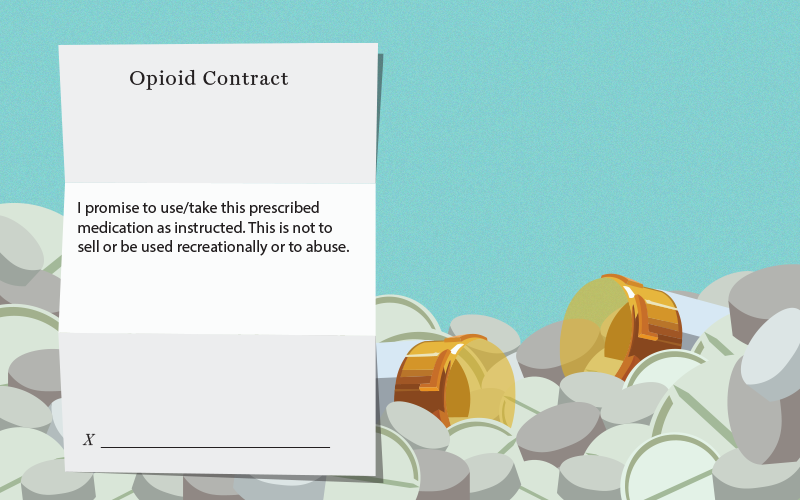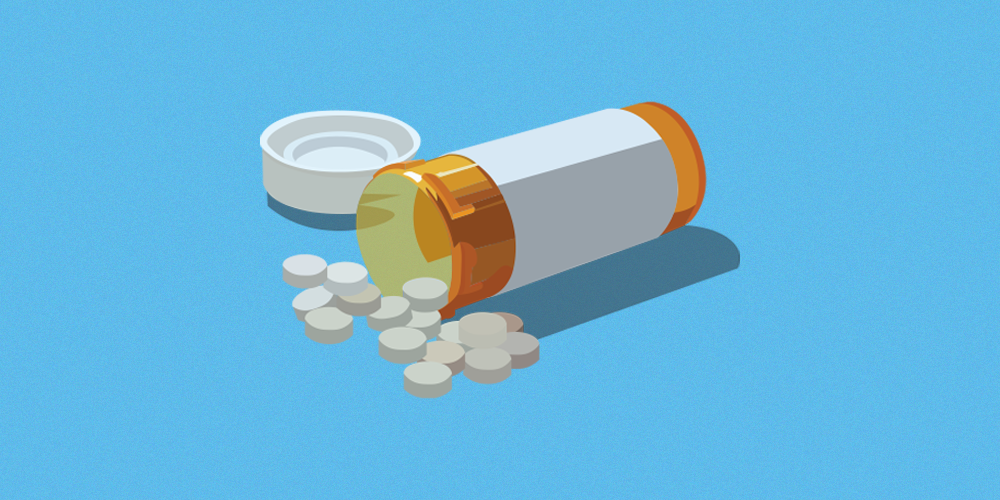In medical training, as a resident doctor, you spend a day each week in outpatient clinic with your own group of patients, inherited from a resident who came before you and now has graduated to real life.
Your patients have lousy insurance — Medicaid or one of the cheap Medicare products; they are patients who can’t afford commercial insurance. Those who can are placed in the clinics of attending doctors with more experience. Your patients are sick, with diabetes and heart problems and chronic lung disease and back injuries, the products of stress and hardscrabble lives and bad luck and food deserts.
They get good care from you because you care. You have energy and drive. You spend time with them, you dot your i’s and cross your t’s. You have a good preceptor in clinic who supervises your work, and you want to do it right.
You love clinic; it’s a break from the horrors of the hospital. Your patients will see you and then go home. They will come back and see you again in a month or a year, and some of them will do well, get better. But Helen N. isn’t one of those who gets better. Helen is always the same.
You meet her your first week in clinic, a woman you remember as old, but if you think about it, she was younger than you are now. Maybe she was 50 but a bad 50, a battered, beaten-down 50. Still, she comes to clinic in colorful clothes, her dark hair coiffed. Mostly it’s her eyes that are old. She is pleasant, well-spoken. She takes many pills, for blood pressure and sugar, anemia and heart failure, arthritis, and back pain. Back pain, yes, chronic, it’s my arthritis, Doc, it’s spinal stenosis, it’s discs that bulge, degenerated discs, nerve pain, and yes, I take my Percocet every day, I can’t function without it, just four a day. Dr. Louise, the doctor before you, just wrote a prescription for 120 Percocet each month. And my Valium, just 60 a month for anxiety. Thank you.
She is your first. Helen is your first chronic narcotic patient. You saw the people on lifelong opiates when you were a student, so you know how this goes: the escalating doses, the never-ending cycle, the pain that gets worse over time and never seems to get better. Your preceptor shrugs and sighs when you present Helen’s case to her. She signs the Percocet and Valium prescriptions since you aren’t yet registered with the DEA. She, too, knows how this goes.
After Helen leaves, you pore through her records, looking for a time before the Percocet, a time before the pain, but the trail leads back 15 years and goes cold, an unsolved crime.
You vow to find another answer for Helen. There must be another answer. Dr. Louise must not have tried hard enough. Tricyclic antidepressants. Anti-inflammatories. Physical therapy. Nerve blocks. They taught you there were other answers. You are going to find one.
•
After three years of residency training, you will soon be an attending at another medical school. You will pass your clinic patients along to a new intern. Several of them have died of old age or heart disease or cancer. Some are better off than when you met them in 1987: their blood pressure stable, their blood sugars in the normal range. Helen is the same. You sign the last Percocet and Valium prescriptions you will ever write for her. You sign them yourself, with your own DEA number. You leave a note for the new resident:
Ms. N. is stable; her medication regimen seems to be optimized. I tried every modality, every non-narcotic drug, every trick in the book, to get her off narcotics but I failed. Please don’t stop trying. But above all, please don’t escalate her dose. She is on the same dose today as she was three years ago. Sadly, I consider this a triumph. At least we know she won’t stop breathing on this dose.
You sign the note. You hug Helen goodbye and refile her thick, dog-eared chart.
•
In the 1990s, they taught us that pain was the fifth vital sign. Blood pressure, pulse, temperature, respirations — and pain. Even then the logic eluded me. We had instruments to measure vital signs one through four; blood pressure, temperature, respirations, and pulse were objective, even if they could change rapidly and dramatically at times. But the pain scale — “Tell me how bad your pain is on a scale of zero to ten, where zero is no pain and ten is the worst pain you’ve ever had” — was subjective and confusing.
Still, I bought in, at least partway. I was new at the game of doctoring and didn’t understand all the nuances. I didn’t know how the rules might be bent, how ideas morphed with time and experience. I didn’t realize that one set of data could tell three different stories and that positions could reverse. That I might not find out that times had changed until I found myself going against the current.
So pain became the fifth vital sign. In the hospital, withholding pain medicine suddenly became the signature of a callous, uncaring doctor. The nurses called us out on allowing patients to suffer. The Joint Commission on Accreditation of Healthcare Organizations studied trends and cited some institutions for inadequate pain management. Patients got morphine pumps and devices for “patient-controlled analgesia” — when it hurt, you hit the button and a “bolus” of morphine was released into your bloodstream. On discharge, a big bottle of oral opiates was prescribed, enough to kill the pain of an entire neighborhood for weeks.
“You have to kill the pain. Get on top of it before it gets on top of you.” You are top dog, not pain, so be on top of it. Although the truth is that Big Pharma was always on top. Not doctors. Not patients.
They taught us in med school to do no harm. Respect autonomy. Be altruistic. Doesn’t that mean killing pain? Go ahead and pen the prescription, the pain pill prescription. A bottle of pills. A pile, a hill of pills to kill the pain. It’s safe, Big Pharma told us — the drug companies did the studies themselves. Respiratory depression? Oh, that’s rare, no need for worry.

They told us to prescribe the shiny, brand-new, brand-name, slow-release, newly released but thoroughly-studied-by-the-drug-company pills. Derivatives of codeine, the ones with hydrogen and oxygen bonds, 4,5-alpha-epoxy-14-hydroxy-3-methoxy-17-methylmorphinan-6-one hydrochloride. Poetic, right? Otherwise known as Oxys. Oxycontin, the long-acting form of oxycodone. What’s the harm in Oxys? We all need oxygen, right? Yes, we need to breathe. Trust us, says Big Pharma, the risk of respiratory depression is rare, very rare, in responsibly prescribed doses.
Oxys go for 20 bucks at Third and Indiana in Philadelphia. Their short-acting cousin, oxycodone, ten bucks, but Vicodin gets just seven; percs will only get you five. Oxys get you higher, last longer. Buyer beware, make sure you get the branded ones. What’s a responsible dose when you’re doing business on North Broad Street? What’s the dose when, to feel an effect, you need a handful all at once?
Your money won’t last long when you take the Oxys by the handful. No matter — there are cheaper forms of opiate. Your dealer knows someone who can set you up with H — yeah, that’s what I mean — horse, heroin. He swears he sells pure product and clean needles. He’ll help you tie the tourniquet, show you how to find the best veins. When you run out of veins, you can shoot between your toes. But the day he cuts the H with fentanyl, you won’t even make it back to the corner where the guy dealing Oxys hangs out; too bad you never got to thank him.
They taught us how to push Narcan to save the life of someone with an opiate overdose. The Narcan pulls the drug off the opiate receptors in the brain, rips the overdosing person out of the grip of death but also out of the warm blanket and gentle dark of oblivion into ice-cold withdrawal, the harsh glare of reality. The particular glare of the emergency room, with its bright fluorescent lights and blaring monitor alarms.
They taught us to treat pain. But now, in the ER, it is pain or death, and we, the doctors, choose pain for our overdosing patient. We choose pain and our patient jolts and yelps. He lunges at us, cursing and venomous. We roll our eyes, share our disdain for his self-inflicted misery. But is it really self-inflicted? Don’t we have a part in this drama? Ask the patient. He might tell you it all started with the Oxys he got from his doctor.
•
The day Cassie died, I was at a medical conference in California. Away from my patients and my never-ending digital inbox tasks, I wasn’t thinking about Cassie’s symptoms or her medications, and I certainly wasn’t expecting her to die. She was only 26 and she didn’t have a terminal illness. Or so I thought.
Cassie was sensitive and intelligent, someone with a life ahead of her. But she’d been struggling for years with physical and mental health problems after an automobile accident in her teens. She had chronic headaches, chronic abdominal and back pain, depression, anxiety, and post-traumatic stress disorder. Somewhere along the way she’d been treated with opiates — Oxycontin and oxycodone — and was on these medications when she came to me two years before her death. Despite my instinct that she was headed toward trouble with addiction, she was still on them when she died.
Early in our relationship, I raised the question with Cassie as to whether we might think about tapering her narcotics. She wasn’t on a big dose, and she came regularly to her appointments. She didn’t run out of pills early or ask to increase her dose. But she was also taking some Ativan, a benzodiazepine, for anxiety, prescribed by her psychiatrist, and the two drugs could interact and increase the risk of respiratory depression. At this point in time, in 2012 or 2013, the opioid epidemic was already in full swing, and we were learning more all the time about the dangers of the drugs we’d once been too comfortable with.
Cassie balked at the idea of decreasing her dose. “I need it for pain!” she protested. “It’s the only thing that helps me!”
I knew she was dependent. Not every patient dependent on opiates is an addict but there’s a fine line. Tolerance and withdrawal can happen with dependence, but to be “addicted” there also has to be dose escalation and compulsive use of a substance despite negative consequences. Cassie knew this as well as I did.
“I never take more than I’m supposed to! I never ask for refills early!” she reminded me. Yes, that was true but I was still worried.
I made her sign an “opioid contract,” something else we were taught to do, a document promising that she would take the medication only as prescribed. It stated that requests for early refills, or signs that she was taking the medication improperly or selling it on the street instead of taking it, or also using recreational drugs, or getting a prescription from someone else at the same time . . . any signs of abuse, really, that I would stop prescribing. That I could drug-test her any time to make sure she was taking her medication but not recreational drugs.

For a long time, Cassie stuck to the contract. I tried to lower the dose once, and she complied but said she was in terrible pain. I asked her to continue, to try the lower dose for another two weeks, hoping she would adjust. But instead, I got a phone call from a pharmacist, telling me she’d brought in a prescription for Suboxone from another doctor. Suboxone is used to help people with opiate addiction stay clean — it prevents the binding of opiates to receptors in the brain that make them work. Taking both Suboxone and oxycodone would stop the oxycodone from working. Why would Cassie do this? And who gave her the Suboxone? I called the doctor listed on the prescription, but the phone rang and rang.
I called Cassie and told her what I knew. She burst into tears. “I got the Suboxone from some pill mill clinic because I ran out of my Oxycontin too soon. I took extra because of the pain. Then I was in withdrawal! I didn’t want to buy more Oxys, but I couldn’t stand the withdrawal so I got Suboxone. I didn’t mean to do anything wrong! I’ll never do it again!”
I wanted to trust her. I was young and smart and sensitive once too. I identified with her. I felt like it was my fault for trying to decrease her dose. I called her psychiatrist. Should we trust her? Should we give her another chance? We decided we should. If she doesn’t get the meds from us, she might resort to street drugs, we reasoned. We can’t abandon her. We kept prescribing. I kept her at the lower dose but still, I prescribed.
We shouldn’t have trusted her. Running out of medication, buying Suboxone from a pill mill, were addict behaviors. A smart addict but an addict. She was spiraling and no longer had control. This likely wasn’t the first time it had happened but only the first time she got caught. She should have gone to rehab. But I let myself be lulled into complicity.
Now, a few months later, she was dead.
The coroner told me she had opiates, benzos, and alcohol in her system. It wasn’t my fault, he said, if she decided to drink on top of the meds. She knew better. Yes, we all agreed. She knew. And if she took too much of her meds or she added alcohol, that was on her, right? Right but also wrong. We were all responsible.
We’ll never know if Cassie meant to kill herself with the drugs and alcohol or if she made a fatal mistake. We’ll never know if she would have agreed to rehab because we didn’t tell her to go. Maybe it would have all gone wrong no matter what, but at least we could have tried.
•
“Doc, I’m going to tell you right up front. I’m a recovering addict. I’m here for antibiotics for my tooth infection. I’m not looking for pain meds.”
I’m working an urgent care shift, and a 40-year-old woman sits on the exam table in room three. She’s in obvious distress, jiggling her legs to distract herself from the pain in her jaw.
She used to be a nurse on a hospital floor. She got caught taking the Oxys that were supposed to be for an end-stage cancer patient, and now she’s in a recovery program. She’s been clean for three years.
I offer her an injection of anti-inflammatory medication. “No opiates. Nothing addictive in it,” I tell her.
“Nah, it won’t even touch this,” she says as I write her penicillin prescription. “My pain tolerance is so low because of all those years of taking opiates. I’ve already taken the maximum dose of ibuprofen and Tylenol, and it doesn’t touch the pain. So I meditate.”
“Does it work?” I ask her.
“No, not really,” she replies with a wry laugh. “But it’s what I’ve got. Every day I want to use, and every night I’m grateful that I haven’t used.”
I like this patient. I think she’s brave. I want to stay with her, hear more about her struggles, but I have another patient waiting in the next room. He’s already angry because I told him I won’t prescribe Percocet for his chronic back pain. I have to remember that this is not all his fault. •




